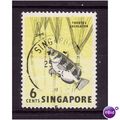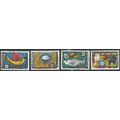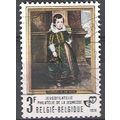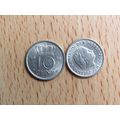Jerbourg Guernsey The Pine Forest John Hinde 1978 stamp
- Condition : Used
- Dispatch : 2 Days
- Brand : None
- ID# : 32298761
- Quantity : 1 item
- Views : 684
- Location : United Kingdom

- Seller : justthebook (+1703)
- Barcode : None
- Start : Thu 07 Oct 2010 23:20:26 (BST)
- Close : Run Until Sold
- Remain : Run Until Sold
More Listings from This Seller view all
Seller's Description
- Postcard
- Picture / Image: The Pine Forest, Jerbourg, Guernsey, Channel Isles
- Publisher: John Hinde (photo H. Gossler) No. 2GY9 (John Hinde cards have become more sought after in recent years due to the recognition of photographers such as Martin Parr)
- Postally used: yes
- Stamp: Guernsey 7p 1978 Royal Visit commemorative SG168
- Postmark(s): Guernsey Post Office 12 Aug 1978
- Sent to: Pontarreg Liandysul, Dyfed
- Notes & Key words:
Check out my !
------------------------------------------------
Postage & Packing:
UK (incl. IOM, CI & BFPO): 99p
Europe: £1.60
Rest of world (inc. USA etc): £2.75
No additional charges for more than one postcard. You can buy as many postcards from me as you like and you will just pay the fee above once. (If buying postcards with other things such as books, please contact or wait for invoice before paying).
Payment Methods:
UK - PayPal, Cheque (from UK bank) or postal order
Outside UK: PayPal or Google Checkout ONLY please. NO non-UK currency checks or money orders (sorry).
NOTE: All postcards are sent in brand new stiffened envelopes which I have bought for the task. These are specially made to protect postcards and you may be able to re-use them. In addition there are other costs to sending so the above charge is not just for the stamp!
----------------------------------------------
Text from the free encyclopedia WIKIPEDIA may appear below to give a little background information:
*************
Saint Martin (Guernésiais and French Saint Martin; historically Saint-Martin-de-la-Bellouse) is a parish in Guernsey, English Channel Islands. The islands lie in the English Channel between Great Britain and France.
The postal code for street addresses in this parish begins with GY4.
The old Guernésiais nickname for people from Saint Martin is dravans
Saint Martin is located in the southeast of Guernsey. The parish borders the Forest on the southwest, Saint Andrew northwest, and Saint Peter Port on the northeast.
Saint Martin also has a very small detachment to the west. The detachment is an exclave which is not contiguous with the rest of the parish.
Saint Martin is one of the most expensive parishes in the island for property, with the average four bedroomed house costing £615,000.
John Wilfrid Hinde (1916-1998) was an English photographer whose idealistic and nostalgic style influenced the art of postcard photography and was widely known for his meticulously planned shoots.
Born in Somerset,
In 1916, Hinde was born in the town of Street in
Hinde briefly switched professions when he became a circus publicity manager in 1944. Here, he met his wife Antoina Falnoga, a trapeze artist who was part of the circus. In 1954, he and Antoina started their own traveling circus company in
While travelling with the circus for twelve years, and in the years after, he began to take colour photographs of the Irish countryside. During this time,
Hinde would sometimes enhance colours in his studio to get a desired effect. He was well known for setting up, or changing a scene so that it would fit his strict style. If he found something unpleasant or out of place in his pictures, he could simply cover it up or move it to get the best shot. So common was this practice that he kept a saw in the back of his car so that, if there happened to be an unsightly object in the view of his camera, he would chop down a nearby rhododendron bush and use it to conceal the eyesore. Needless to say, many rhododendron bushes appear in Hinde's
From the late 1960s to the early 1970s, Hinde worked on his most widely known production: the Butlin Holiday Camps postcards. Billy Butlin had founded the camps as a place for working class people to go for vacation, complete with high excitement and low cost. Butlin hired Hinde to produce postcards that reflected the spirited and enjoyable environment found at his camps. By this time, Hinde worked more as an art director than an actual photographer, so he hired two German photographers, Elmar Ludwig and Edmund Nägele, and one British photographer, David Noble. They travelled to the different camps and set up the necessary lights and photography equipment, often taking a whole day to make them just right.
Hinde's pictures portrayed holiday makers taking advantage of all of the things Butlin's had to offer, having a grand old time in the process. The photographers used large format cameras and Ektachrome film to capture the optimistic tone that Butlin was looking for. Scenes from the postcards included people eating in lavishly decorated dining halls, large indoor swimming pools, themed bars, and amusement park rides. Actual holiday makers were used in the shots, but like the
Hinde's postcards were immensely popular, despite Hinde's view that the photographs held no artistic value. In 1972, he decided to sell his company to the Waterford Glass Group in order to pursue his love of landscape painting.
Even though Hinde never viewed his photographs with much reverence, the
Some of his postcards form the basis for an Irish 30 minute television programme called Cartai Phoist which picks 3 postcards per episode, and using a contemporary Irish artist/celebrity/tv personality, recreates the postcard by finding the original people (or their next-of-kin) and posing at the exact spot where the original postcard shot was taken. So far 18 episodes have been made, with more in the pipeline. These can be viewed on www.tg4.ie.
Listing Information
| Listing Type | Gallery Listing |
| Listing ID# | 32298761 |
| Start Time | Thu 07 Oct 2010 23:20:26 (BST) |
| Close Time | Run Until Sold |
| Starting Bid | Fixed Price (no bidding) |
| Item Condition | Used |
| Bids | 0 |
| Views | 684 |
| Dispatch Time | 2 Days |
| Quantity | 1 |
| Location | United Kingdom |
| Auto Extend | No |




 for 1 item(s)
for 1 item(s)

















